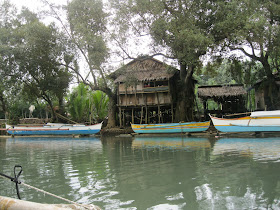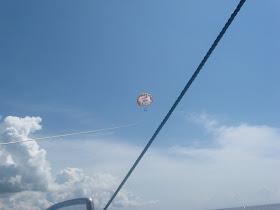Over 80% of Filipinos are Roman Catholics, and nearly all Roman Catholic homes and businesses in the Philippines own and display a statue of Santo Niño, a representation of the Christ Child. The Santo Niño de Cebu ("Holy Child of Cebu") is a celebrated statue of the Christ Child venerated by Filipino Roman Catholics. Similar to the Infant of Prague, it is claimed to be the oldest religious image in the Philippines, originally given by Ferdinand Magellan to Rajah Humabon and his wife Humamay in 1521, along with statues of Our Lady of Guidance and Ecce Homo. The statue is clothed in expensive textile robes and a gold crown, and gained renown when it miraculously survived a devastating parish fire in 1565. The Santo Niño de Cebu statue is permanently housed under bulletproof glass at the Basilica Minore del Santo Niño in Cebu City, and is one of the most recognizable cultural images in the Philippines found in many secular and religious areas. The Basilica is a major site of religious importance to Roman Catholics as well as a significant historical site and international tourist destination.
Before we left Cebu in August 2011 on our last trip to the Philippines, my wife purchased a Santo Niño statue molded of light-weight fiberglass (for easier air transport back to the U.S.) from a vendor outside the Basilica Minore del Santo Niño, which is immediately adjacent to Magellan's Cross. This statue was clothed in a red tunic of thin nylon material which was slit down the sides of the legs, covering the back and front of the statue. The statue also happened to be an "anatomically correct" representation of the toddler Jesus. When we arrived back at our home in the U.S., my wife displayed the Santo Niño statue on an end table in the entry foyer of our house, positioning it near a floral bouquet facing our main entrance door.
A few weeks after positioning the Santo Niño statue, my wife noticed that the statue had moved its position. She asked me whether I had moved it, and I told her that I hadn't. She confronted our 8-year-old daughter about this, and she said that she hadn't moved it. "Well, we must be having a miracle then, if no one is moving the Santo Niño!" my wife replied.
A few days later, she found that the Santo Niño statue had moved again, and then again another day or so later. The movement seemed to coincide with the timing of visits from our daughter's friend, a neighbor girl who is about the same age. My wife questioned our daughter a little bit further, and found that apparently the first time this movement happened was when our daughter was using the bathroom and her friend was waiting outside the bathroom door, which is immediately adjacent to the end table with the Santo Niño statue. Aha! Finally a clue. Our daughter then divulged to my wife that she had seen her friend these two most recent times picking up the Santo Niño statue to take a peek underneath his tunic, getting a look at his anatomically correct "pikoy"! Our daughter told my wife that she had told her friend "that's not appropriate". My wife just advised our daughter to tell her neighbor friend not to move the Santo Niño anymore. Then, she put in a request with my mother-in-law to have a new set of clothes made for Santo Niño, this one complete with a pair of underwear! So, now our Santo Niño has a beautiful white silk gown with red trim and sequins rather than a simple red nylon tunic... and a proper pair of underwear to prevent little neighbor girls from peeping at his pikoy!









































